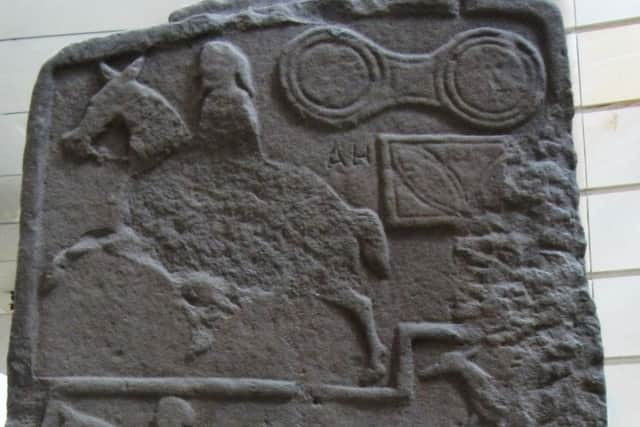Book review: Picts: Scourge of Rome, Rulers of the North, by Gordon Noble and Nicholas Evans
The Picts have long fascinated and puzzled. They emerge into history around 300AD and seem to disappear 700 years later. The subtitle of this book calls then “Scourge of Rome” and “Rulers of the North”. The first is an exaggeration. On the first Roman invasion of Scotland, the contemporary historian Tacitus in his biography of his father-in-law Agricola called the people of what is now the North of Scotland “Caledonians” giving their chef the great anti-imperialist line “You make a desert and call it peace”.
We have lists of Pictish kings, but there has always been argument about what language they spoke. In the 18th century some decided it was “Gothic”, a Germanic tongue. The English (Northumbrian) historian Bede, writing I the eighth century, said there were five languages spoken in the British Isles: English (ie. Anglo-Saxon, British (later known as Welsh), Gaelic, Pictish and Latin. Some have thought Pictish not even an Indo-European tongue (in this respect like Basque), but Noble and Evans are certain that it was a northern form of British – that is, a p-Celtic tongue, and that eventually it gave way to Gaelic (q-Celtic) as the Scots, immigrants from Ireland, gradually extended their settlements across Scotland north of the Highland Line, their chiefs marrying into Pictish royal families and gradually achieving domination.
Advertisement
Hide AdThis is plausible. Linguistic shifts do occur, resulting from political change. Few now believe, for instance, that the Anglo-Saxon invasions of England and south-east Scotland resulted in the mass westward exodus of British (Celtic) speakers. Instead they were probably mostly absorbed in the new Anglo-Saxon (and Danish) kingdoms, gradually losing their language, but not their homes. It is reasonable to suppose that the same thing happened to the Picts. The people survived, remained where they were, but over a couple of generations their language withered, giving way to the political reality which saw Scottish kings supplant Pictish ones. A reasonable assumption, as I say, but not perhaps a certain one.


Noble and Evans write with authority about every aspect of Pictish life, following the evidence but, inevitably, with some speculation. This is as full and interesting a survey of what is known, can be known, and can only be suggested as any general reader may wish to have. The authors have brought off a difficult double: a work of scholarship with an appeal that goes well beyond other scholars.
Chapters deal with “everyday life in Pictland” – an audacious undertaking , given that seven centuries are covered. Then come chapters on “Citadels, kings and warriors”; “The Book of Life, from Pagan Magi to early Mediaeval saints”; “Funeral rites – Ways of Death and burial”; “Marking the signs” – a survey of the extraordinary, often beautiful, fascinating and still perplexing inscriptions and standing stones; until, finally, we deal wit the end of the Picts – an end that is surely a disappearance or swallowing up – and as a coda, the Pictish legacy.
Pictland was essentially the North-east of Scotland between the Tay and the Moray Firth, then extending to the far north and Orkney and Shetland. Anyone mildly ignorant (like me) will likely be surprised and, if surprised also delighted, by the wealth of evidence Noble and Evans have assembled and deployed. They helpfully append a list of “Sites to visit”. There are 56 of them, including museums. Checking all these out and giving them more than the customary tourist attention offers a challenge comparable to climbing every Munro.
In short, Noble and Evans have written a book to read and cherish. No doubt some of their conclusions may be questionable, as is always the case in historical studies. But for those who have only a misty impression of the Picts, it is an extraordinarily rich story that the authors have to tell. The book is handsomely produced with fine and informative illustrations. No doubt there is still much to be discovered and learned, but for anyone who reads this book, the Picts will be less mysterious than they were. Only those who like to have their historical mysteries remaining mysterious can be disappointed.
Picts: Scourge of Rome, Rulers of the North, by Gordon Noble and Nicholas Evans, Birlinn, 336pp, £22